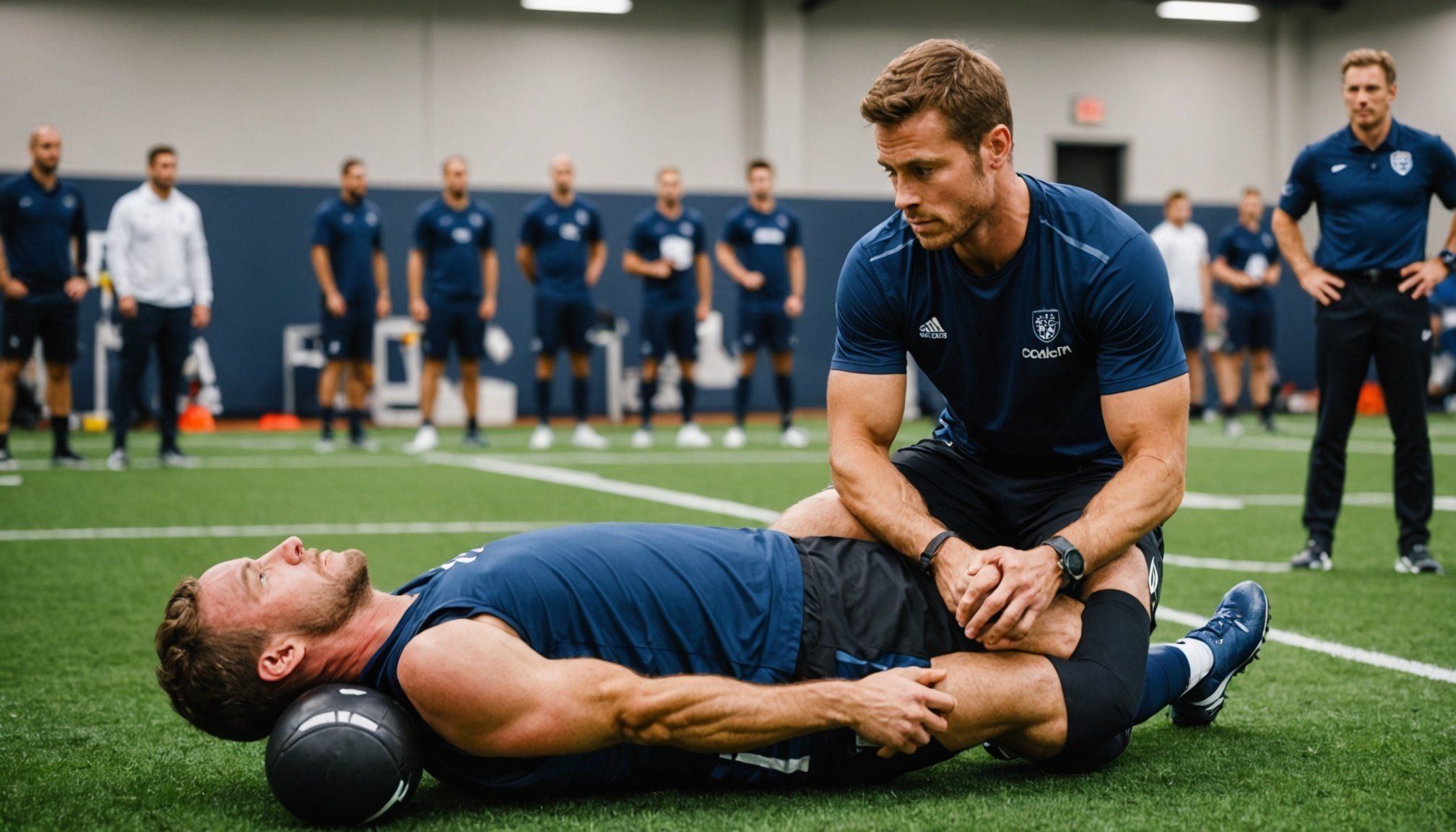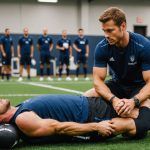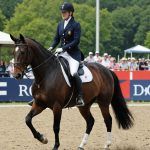Overview of Interdisciplinary Teams in Football Injury Rehab
In the realm of football injury rehabilitation, interdisciplinary teams are pivotal. These teams consist of various specialists who work in unison, each providing their expertise to optimize athlete recovery. The essence of such collaboration lies in integrating diverse skills, ensuring a holistic approach to sports medicine.
The key professionals involved typically include physiotherapists, sports physicians, nutritionists, and psychologists, each contributing unique insights into the rehabilitation process. Physiotherapists bring their expertise in movement assessment and injury rehabilitation, focusing on physical restoration. Nutritionists tailor dietary plans that support healing, while psychologists address mental resilience, which can significantly influence recovery.
Also to discover : Key Techniques for Effective Psychological Debriefing After Intense Equestrian Competitions
The impact of this collaborative approach on rehabilitation outcomes is profound. When these professionals collaborate, it enhances communication and cohesion, leading to comprehensive care strategies tailored to each athlete’s needs. This synergy not only speeds up the recovery process but also minimises the risk of reinjury. Moreover, the holistic understanding shared among the team members ensures that all aspects of the athlete’s health are considered, facilitating a well-rounded recovery experience.
Through interdisciplinary collaboration, athletes are equipped with diverse support networks, resulting in improved recovery times and better overall performance post-injury.
Also to read : Grip like a pro: elevate your disc golf accuracy with expert techniques
Roles of Physiotherapists in Injury Rehab
In the realm of injury rehabilitation, physiotherapists play an essential role by using specialized assessment techniques to evaluate an athlete’s condition. This includes functional movement assessments that pinpoint specific dysfunctions and help track progress. Accurate evaluation is crucial for designing tailored rehabilitation programs that cater to individual needs and injury types.
Physiotherapists implement evidence-based interventions aimed at enhancing recovery speed. These interventions often include a range of passive and active treatments, from manual therapy to guided exercises, all designed to improve mobility and reduce pain. Evidence shows that such personalized programs significantly contribute to better rehabilitation outcomes, making physiotherapists indispensable in the recovery process.
Moreover, they collaborate closely with others in interdisciplinary teams, ensuring that the rehabilitation approach is well-rounded. This includes coordinating with sports physicians to align treatments with medical goals and working with nutritionists to support overall health and healing. Through this collaboration, physiotherapists help athletes achieve optimal recovery and return to their best performance levels efficiently. Their expertise in movement assessment and program design ensures that injuries are managed competently, minimising the long-term impact on an athlete’s career.
Nutrition’s Impact on Recovery
In elite sports, sports nutrition is a critical factor in effective recovery strategies. Appropriate nutrition impacts an athlete’s healing process and enhances performance post-injury. Notably, nutritionists within interdisciplinary teams ensure dietary plans are meticulously tailored to each athlete’s needs, demonstrating the importance of nutrition in rehabilitation.
Importance of Nutrition in Rehabilitation
Nutrition significantly influences the healing and recovery phases of injured athletes. Essential nutrients, such as proteins and omega-3 fatty acids, are vital for muscle repair and reducing inflammation. Proteins accelerate tissue reconstruction, while omega-3s help manage inflammation naturally. Successful case studies highlight how well-adjusted nutritional strategies lead to faster recoveries. For instance, athletes consuming balanced diets with sufficient nutrients show improved healing rates and resilience against re-injury.
Collaboration Between Nutritionists and Other Professionals
Nutritionists play an integral role in interdisciplinary teams by coordinating dietary plans with athlete training and rehabilitation. This cohesive approach ensures that nutritional requirements align seamlessly with therapeutic goals set by physicians and physiotherapists. Integrated nutrition strategies, like periodic reviews of dietary efficacy, have proven successful. By adhering to these strategies, athletes receive comprehensive care, optimizing recovery and subsequent performances.
Psychological Support in Recovery
Understanding the significance of sports psychology in rehabilitation is essential. Psychological support plays a pivotal role in shaping an athlete’s resilience during the recovery process. Mental health significantly influences physical recovery, as athletes who maintain a positive mindset and reduce stress levels often experience more effective healing.
Psychologists employ various strategies to bolster recovery, including cognitive-behavioral techniques that aid in mood regulation and stress management. These tactics are designed to enhance an athlete’s focus and motivation, crucial components for overcoming setbacks. Through personalised sessions, psychologists help athletes develop resilience, transforming mental barriers into opportunities for growth.
Numerous case studies highlight how potent psychological interventions are in rehabilitation. For instance, athletes engaged with dedicated mental health support exhibit faster recovery rates and improved performance post-injury. Testimonials often emphasize enhanced self-confidence and reduced anxiety, showcasing the tangible impact of psychological strategies. Overall, integrating sports psychology into rehabilitation programs not only supports mental wellness but also fosters better performance outcomes, cementing its requisite role in athlete recovery processes.
Innovations in Rehabilitation Techniques
In the landscape of football injury rehabilitation, technological advancements are revolutionising recovery processes. Cutting-edge innovations, such as wearable technology and biofeedback systems, are transforming how athletes approach rehabilitation, allowing for more precise evaluations and personalised plans. These tools provide real-time data that enable practitioners to adjust training regimens and interventions, effectively accelerating recovery.
Biofeedback, in particular, offers significant benefits. By monitoring physiological changes, this technology helps athletes better understand their bodily responses, enhancing their self-awareness and control during rehabilitation. This feedback loop is crucial for optimising training intensity and promoting efficient progress.
Several innovative rehab tools, such as robotic exoskeletons and virtual reality applications, have garnered attention for their impact on rehabilitation times. Robotic exoskeletons aid in assisting movement and rebuilding muscle strength, while virtual reality offers engaging platforms for therapeutic exercises. These tools not only enhance rehabilitation outcomes but also keep athletes motivated and involved in their recovery journey.
By embracing these innovations, interdisciplinary teams can provide comprehensive care that aligns with the latest sports medicine advances. This integration fosters personalised recovery routes, ensuring athletes achieve optimal performance post-injury and significantly reducing the likelihood of reinjury.
Case Studies and Success Stories
Exploring rehabilitation case studies offers valuable insights into the benefits of interdisciplinary teams in sports injury recovery. One prominent example is the recovery journey of a well-known football player who sustained a severe ligament injury. By engaging a comprehensive team of physiotherapists, nutritionists, and sports psychologists, the athlete effectively navigated their rehabilitation process.
Key takeaways reveal that coordinated efforts among specialists foster optimal recovery outcomes. In this case, the physiotherapist’s guidance on movement assessment and tailored exercise programs was pivotal in regaining strength. Concurrently, the nutritionist ensured dietary plans supported muscle repair and inflammation reduction, vital for the athlete’s resilience.
Patterns observed in successful recovery stories highlight the synergy between physical and psychological support. The sports psychologist’s intervention helped maintain the athlete’s mental focus and motivation, significantly driving the recovery forward. Such interdisciplinary success underscores the need for continuous collaboration among professionals to enhance athlete recovery times.
Focusing on team-focused strategies, these stories emphasize not only recovery acceleration but also enhancing post-injury performance, reassuring athletes that interdisciplinary collaboration remains a potent approach in sports medicine for achieving holistic rehabilitation goals.
Practical Tips for Implementing Interdisciplinary Approaches
The integration of interdisciplinary collaboration is essential in athlete rehabilitation. Embracing an interdisciplinary approach requires strategic implementation. Here are some practical tips for ensuring successful integration.
-
Establish Clear Communication: Facilitating open and consistent communication among team members is crucial. Regular meetings should be scheduled to discuss athlete progress and adjust rehabilitation strategies as needed.
-
Define Roles and Responsibilities: Clearly outline the duties of each team member within the interdisciplinary structure. This prevents overlap and ensures that each professional’s expertise is utilized optimally.
-
Engage Athletes in Their Recovery: Encouraging athletes to participate actively in their rehabilitation plans fosters motivation and adherence to treatment protocols. Providing them with a clear understanding of each professional’s role can enhance trust and cooperation.
-
Utilize Collaborative Tools: Implement digital platforms and resources that support seamless interaction between team members. Shared access to information and progress tracking tools can significantly boost collaboration efficiency.
These steps promote a cohesive strategy in athlete recuperation, ensuring that interdisciplinary practices are effectively implemented. Through coordinated efforts, the recovery process can be enhanced, leading to better outcomes and athlete well-being.










